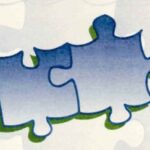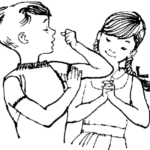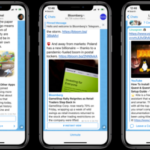October 3, 2024 Internet and virtual life
Thus, over time, virtual relationships become more important than real ones, and people gradually isolate themselves and live in a parallel world populated by idealized people.
Internet addiction disorder. The existence is no longer in question
The prolonged use of smartphones has gradually led the world’s population into a compulsive addiction to electronic devices in general and the Internet in particular.
It was back in 1995 when the psychiatrist Ivan Goldberg, in what could be considered a very provocative manner at the time, proposed the inclusion of a new syndrome called Internet Addiction Disorder in the DSM IV.
Today, in 2024, the existence of this disorder is no longer in question, although it still cannot be used for legal or insurance purposes.
The network addiction “syndrome” shows symptoms comparable to pathological gambling (Internet Gaming Disorder), classified according to the DSM-IV categorical nosography diagnostic criteria.
Its diagnosis is recognized by a specific test, which gives a positive result if the person asked the following questions answers affirmatively to at least five of them :
Are you over-connected to the Internet (thinking about your last connection, or already planning your next one) ?
Do you feel the need to spend more and more time connected to the Internet ?Have you tried to reduce your Internet use without success ?
Do you feel restless, nervous, depressed, or irritable when you try to reduce (or temporarily stop) your Internet use ?Do you spend more time online than you had planned ?
Have you ever lied to your family members about how much time you spend on the Internet ?Do you use the Internet to distract yourself from problems or to feel better ?
As mentioned earlier, Internet addiction has many similarities to pathological gambling, compulsive shopping, and in some ways even actual substance abuse.
In fact, Internet addiction has these essential characteristics :
Dominance: the activity (like a drug) constantly dominates thoughts and behavior.
Mood instability : the onset of activity (like drug use) causes mood changes.Tolerance : over time, the need to increase use (as with drug use) increases to achieve a pleasurable effect, but this tends to diminish over time.
Abstinence : when the behavior is stopped or reduced (as with drug use), a feeling of malaise occurs.Conflict : a direct consequence of the disorder, it leads to obvious consequences in family, social, school and work behavior.
Denial of the problem : is present in all addictions (such as drug use) because it produces a pleasant feeling.Relapse : the tendency to resume the activity after having stopped it (as in drug use).
Other non-specific, and therefore more insidious, manifestations may include sleep disturbances and chronic fatigue (due to frequent nighttime connections), reduced immune system efficiency, impaired appetite, poor grooming, headaches, vision changes, and the onset of orthopedic problems such as frequent back pain and carpal tunnel syndrome (due to continuous use of a mouse).

Some people may even have actual seizures caused by the constant visual stimulation of prolonged exposure to computer screens.
The current state of knowledge does not allow us to say with certainty what neurochemical changes are involved in the onset of the disorder and what the consequences are.
However, it seems that there is an imbalance between the serotonin, dopamine and endogenous opioid systems, substances fundamental to the functioning of the nervous system, the alteration of which would lead to a change in the functioning of the so-called “pleasure centers”.
Over time, this alteration tends to become chronic, causing a kind of abnormal “reset” of the brain.
Among the many forms in which Internet addiction can manifest itself, the most common is undoubtedly cyber relationship addiction, which is characterized by the tendency to establish friendship or love relationships with people met online, mainly through social networks, chats, forums or newsgroups.














